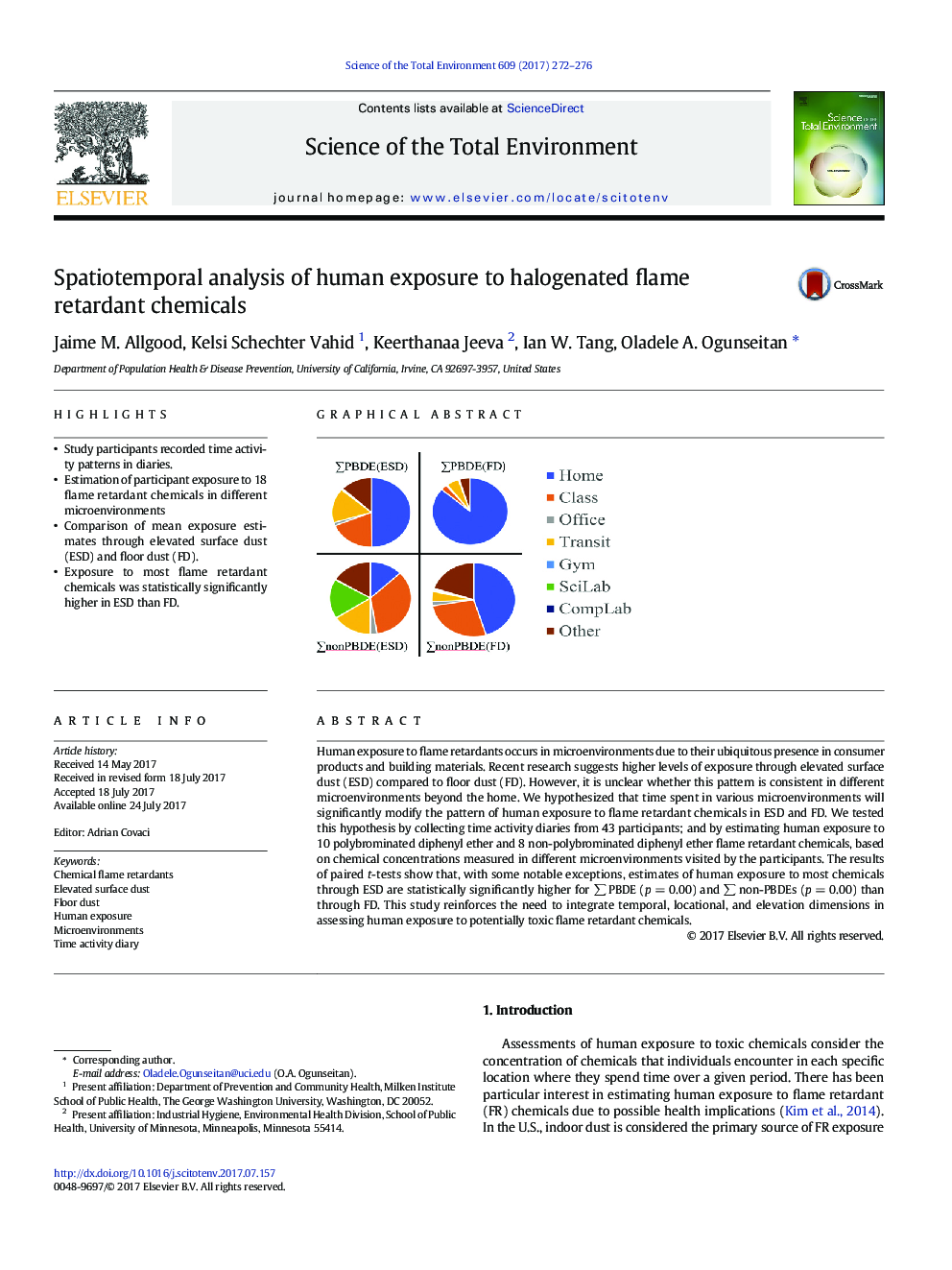| Article ID | Journal | Published Year | Pages | File Type |
|---|---|---|---|---|
| 5750752 | Science of The Total Environment | 2017 | 5 Pages |
â¢Study participants recorded time activity patterns in diaries.â¢Estimation of participant exposure to 18 flame retardant chemicals in different microenvironmentsâ¢Comparison of mean exposure estimates through elevated surface dust (ESD) and floor dust (FD).â¢Exposure to most flame retardant chemicals was statistically significantly higher in ESD than FD.
Human exposure to flame retardants occurs in microenvironments due to their ubiquitous presence in consumer products and building materials. Recent research suggests higher levels of exposure through elevated surface dust (ESD) compared to floor dust (FD). However, it is unclear whether this pattern is consistent in different microenvironments beyond the home. We hypothesized that time spent in various microenvironments will significantly modify the pattern of human exposure to flame retardant chemicals in ESD and FD. We tested this hypothesis by collecting time activity diaries from 43 participants; and by estimating human exposure to 10 polybrominated diphenyl ether and 8 non-polybrominated diphenyl ether flame retardant chemicals, based on chemical concentrations measured in different microenvironments visited by the participants. The results of paired t-tests show that, with some notable exceptions, estimates of human exposure to most chemicals through ESD are statistically significantly higher for â PBDE (p = 0.00) and â non-PBDEs (p = 0.00) than through FD. This study reinforces the need to integrate temporal, locational, and elevation dimensions in assessing human exposure to potentially toxic flame retardant chemicals.
Graphical abstractDownload high-res image (141KB)Download full-size image
